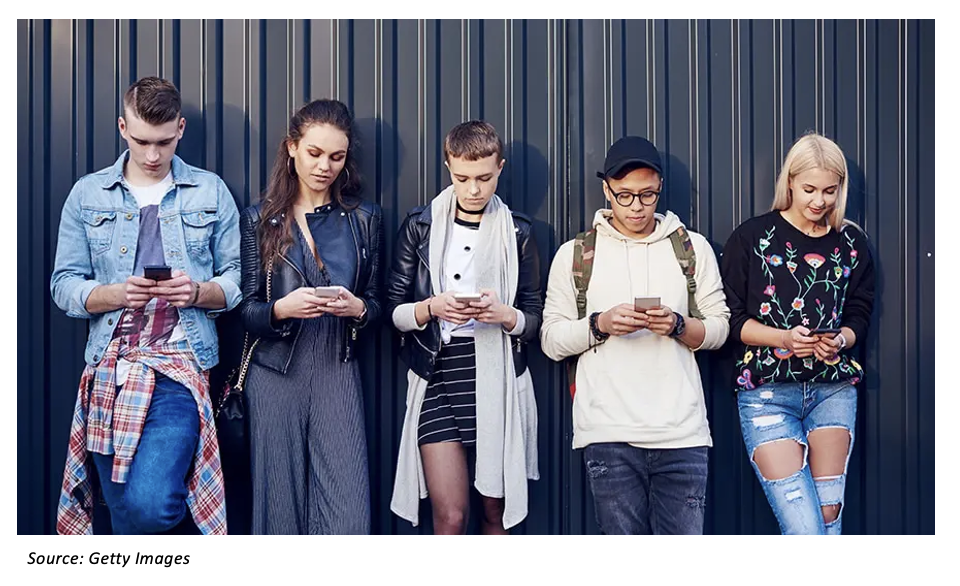AI has been around for years, but it has dominated conversation in the past year with the launch of generative AI tools like ChatGPT. The impact of artificial intelligence on kids has created a mix of particular interest and concern, leading to some big questions:
Will AI ultimately do kids more good than harm, or more harm than good? Is AI a sort of progress that we should be excited about? Are the trade-offs worth it?
And as Common Sense Media put it, not only: What can AI do, and what can’t it do? But also: What should AI do, and what shouldn’t it do?
There is a lot to think about when it comes to the role that AI plays in the lives of Gen Alpha. Here are some of the considerations about AI that are, in our view, the most significant:
The Pros
AI empowers kids to do more: With AI, kids can do countless things on their own that they may have never done otherwise, from changing the music in the car from the backseat to creating apps by speaking aloud their vision (instead of voice to text, think voice to code).
It takes information access to the next level: The internet was the ultimate gamechanger in providing people (including kids!) with access to information – but now AI is making that access even more convenient, intuitive, and curated to those who request it.
AI can facilitate creativity: While some worry that AI will squash creative thinking, it also has the power to take kids’ ideas to new places. Generative AI programs can help kids communicate their creative ideas (either in writing or through visuals), bringing those ideas to life.
The Cons
AI can do the thinking for kids: Generative AI has prompted many to fear that students have been handed a shortcut to writing essays and completing homework assignments. Not only is this a threat to kids’ intellectual growth, it’s creating worry that AI will diminish kids’ “grit characteristics” – otherwise known as their ability to persevere when they are challenged.
Additionally, the content that AI produces is not always accurate or appropriately contextualized. It can feed kids false information, and kids may lack the ability to do the executive-level critical thinking needed to evaluate the integrity of AI’s output.
AI takes advantage of kids’ malleability: With every input that a kid provides an AI program, the algorithms use that data to shape what the AI returns back. This creates an imbalanced dynamic between child and AI, in that the AI program is in control over the information it provides an impressionable child – all without the child recognizing it.
It challenges kids’ right safety and privacy: AI may generate or surface content that is inappropriate for kids to access, and there are also privacy concerns to worry about. AI’s facial recognition capabilities can be used for identity theft or for shaping a child’s digital identity before they have autonomy to create it themselves. And just like other internet platforms, AI can also be a source for capturing and using private information that kids may unknowingly feed it.
The In-Betweens
AI offers boundless convenience but perpetuates instant gratification: By tapping into AI, nearly any request can now be voiced into thin air with immediate results. Many wonder if this is necessarily a good thing for kids. Even without AI, parents are already battling against kids’ expectations for instant gratification.
It’s become like a friend: In the minds of kids, AI can take on the role of a digital companion. Not only is it always there to help and to interact, but AI entertains and often has an identity with a personality and a sense of humor. It’s not unusual to hear kids ask their smart speakers questions like, “How are you doing today, Alexa?” And while this can feel like a sweet, innocent relationship, it calls into question how this will impact kids’ emotional development.
Experts suggest that as parents navigate the uncertainty surrounding AI, they should opt for education instead of avoidance with kids. In other words, the best way to mitigate the risks and harness the opportunities of AI for kids is to make sure they understand its capabilities and limitations – recognizing that AI is here to stay.
Common Sense Media is a great resource for helping navigate the murky waters of AI. Click to check out their AI Initiative on Understanding the Impact of AI On Our Kids.





















